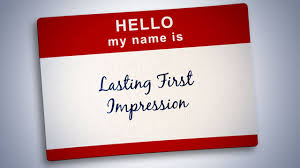
I believe everyone has a story to tell. Many have several. Just as the average persondreams 4 or 6 times a night, I think an average person can spin 4 or 6 great stories about her life.
I attend many women’s networking events. Women seem to network more than men who usually go for drinks or sports outings while we gals attend wine and food events and empowerment programs.
I’m frequently dismayed at how some women are reluctant to state who they are, promote what they do or present themselves with confidence. Some neglect to present themselves at all and just start talking away, missing the opportunity to make a great impression.
People may not listen to the end of what you have to say. You need to grab their attention from the start.
A few examples I’ve heard that don’t make much of an impact:
“I’m just a stay-at-home mom. I don’t have a career right now”
“I’m used to work full time in XYZ industry, but now I’m looking for a new opportunity.”
“I’m trying to start a new business venture.”
“I’m a vice president at XYZ company.”
One of my areas of expertise is to help people pitch, package and present who they are and what they do effectively.
Here are five tips to present yourself. They are not just for women. Men stumble over their words as well.
1. Believe that you are always someone special and what you do matters. State it with confidence. You are never “just” anything. And never make excuses for leaving a career to be a full time mother. It’s important work. Give yourself credit.
2. If you are going in a new direction, use your words to help open doors. Examples: “I am transitioning from the corporate life to pursue work with a worthy not-for-profit. I am looking at various organizations now.” or “After two decades working in public relations, I now train small business owners how to manage own their PR.”
3. Leave out the word “trying.” Be clear about your intentions even if you are just starting up or out. You never know if you are meeting a potential customer, collaborator or employer. Examples: “I’ve started a service to provide virtual assistance for business executives.” “I’m turning my passion for creating one of a kind collages into a greeting card business.” Give your words a call to action.
4. Your title does not define what you do nearly as well as kind of work you do. For example, rather than introducing yourself as a vice president of marketing at a big name toy company, say: “I work at (Company Name) and market educational toys for children with learning disabilities to help them develop essential learning skills.” Give your work a meaningful description.
5. Show impact. It’s not only what you do but how it helps others. Examples: “I am a certified health coach who helps busy women make healthier lifestyle choices” (vs. “I am a health coach”). or “I help women make informed choices about their financial management and investments” (vs. “I am a financial adviser”).
Here’s a tip: Buy a small journal. Write five different paragraphs about who you are, what you do now and what you intend to do. Write 1-2 sentences introducing yourself for each one. Then practice saying it until it comes naturally.
Choose your words carefully. Avoid short selling who you are but try not to be long winded. Words are powerful tools to build relationships, create messages, sell yourself and make an impact.
You only have one chance to make a first impression. Make it a lasting one.
Like what you read? Want to hear more Fab-ism from me? Please join my mailing list and follow me on my Facebook Page and Twitter











